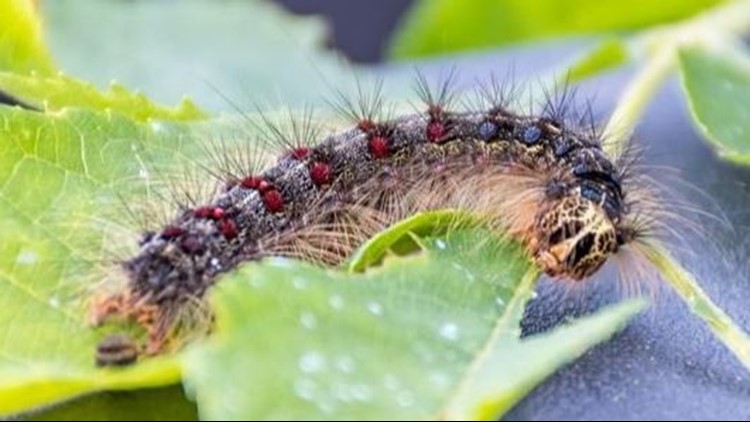The Washington State Department of Agriculture will spray the first of three treatments to help eradicate gypsy moths in Western Washington this week.
Gypsy moths are a non-native, invasive species that are "voracious eaters that defoliate and kill trees," according to the Department of Agriculture.
The Department of Agriculture plans to spray roughly 300 acres near Graham in Pierce County, and another 1,000 acres on and surrounding Naval Base Kitsap – Bangor. The treatment is expected to occur mid-week, but exactly which day is contingent upon weather conditions.
To stay in the loop of treatment efforts, residents in the spray areas should sign up for email, text message or robo-call alerts, said Department of Agriculture spokeswoman Karla Salp.
"It all depends on the weather, so we only know the day before," Salp said. "So those notifications are the best way to know it's happening, other than following our social media accounts."
Residents will receive notice of a planned treatment one day in advance.
The treatment will be sprayed from a low-flying single fixed-wing air tractor.
The pesticide to be sprayed — Bacillus thuringiensis kurstaki, shortened to Btk — is a naturally occurring bacteria found in soils or plants that produce a protein that is toxic to the moths.
The spray is intended to stick to the foliage that gypsy moth larva will munch on after hatching.
"That way, when the caterpillars are emerging, they'll be hungry and they'll eat the leaves and ingest the bacteria," said Tiffany Pahs, the Department of Agriculture's gypsy moth survey coordinator. "And that bacteria, it kinds of destroys their gut, and will ultimately kill the caterpillar."
The spray is not known to be toxic to humans or household pets.
Regardless, residents within the spray area are advised to remain inside during the aerial application of the product and for 30 minutes afterward until it can dry on the plants.
Those who come into contact with the spray should wash the affected skin with soap and water. If it gets into eyes, flush them out for 15 minutes.
Salk advised residents to park their vehicles inside their garage or cover them with a tarp to prevent them from being coated in the pesticide's sticky residue. If the spray does come in contact with a vehicle or other outdoor items, such as patio furniture, it will wash off with soap and water.
The second and third application of the treatment, which is done to ensure that the pesticide is applied to all of the foliage, will be applied approximately three days to two weeks after the first application. The Department of Agriculture expects all three treatments will be completed by May.
Last summer, the Department of Agriculture trapped 17 moths on Bangor and in the surrounding area. It trapped 117 male gypsy moths throughout the state last year — the highest number since 1995.
Bangor is particularly susceptible to infestations of the species because of the frequency of people moving to the area from across the country — but especially from the East Coast, where there is an infestation of the moths.
Gypsy moth egg masses are typically transported on outdoor items, such as patio furniture, firewood, camping gear and recreational equipment or vehicles.



